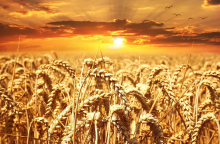 |
| Food |
Global food prices are expected to remain low for the coming decade as the rate of population growth is forecast to decline and per capital consumption of many commodities will level off.
Poorer countries with rising populations and scarce natural resources will become increasingly dependent on imports for basic foodstuffs to feed their populations. These are the key messages of the OECD-FAO Agricultural Outlook 2018-2027, which provides ten-year projections for all major agricultural commodities, as well as for biofuels and fish. According to the Organization for Economic Cooperation and Development (OECD) and the UN Food and Agriculture Organization (FAO), a decade after the food price spikes of 2007-8, conditions on world agricultural markets are very different today. “Production has grown strongly across commodities, and in 2017 reached record levels for most cereals, types of meat, dairy products, and fish, while cereal stock levels climbed to all-time highs,” the executive summary says. However, demand has started to grow slower than in the past. The authors attribute this to weakening demand in major emerging economies, stagnating per capita consumption of staple foods and slowing demand growth for meat products. Another reason is that the rate of global population growth will decline gradually. With strong supplies, ample stocks and lower demand growth, commodity prices are expected to decline in the years to come.
The Outlook finds that global agricultural and fish production is projected to grow by around 20% over the coming decade, but with considerable variation across regions. Strong growth is expected in developing regions with rapidly growing populations. In developed countries, especially in Western Europe, production increases will be much lower. With slower consumption and production growth, agricultural and fish trade are projected to grow at about half the rate of the previous decade. FAO and OECD expect that net exports will increase from land-abundant countries and regions, notably the Americas. Countries with high population growth, in particular in the Middle East and North Africa, Sub-Saharan Africa and in Asia, will see rising net imports. “Many poorer countries with rising populations and limited land resources will be increasingly dependent on food imports to feed their people,” said OECD Secretary-General Angel Gurría.
With regard to meat products, the outlook projects that demand will grow at a slower rate than before. “Some low-income regions which currently have low per capita consumption levels of meat, such as Sub-Saharan Africa, are not expected to increase these levels significantly due to a lack of sufficient income growth,” the report finds. “Some emerging economies, in particular China, have already transitioned to relatively high levels of per capita meat consumption. In India, where income growth is stronger, dietary preferences translate rising incomes into an increased per capita demand for dairy as preferred animal protein, rather than meat.” Demand for cereals and vegetable oil for the production of biofuels is expected to grow much more modestly than in the last decade, when biofuels expansion led to more than 120 million tonnes of additional cereal demand, predominantly maize. With existing policies in developed countries unlikely to support biofuels expansion, most demand growth will come from emerging countries which have introduced blending mandates.
The report also addresses health concerns since the per capita intake of sugar and vegetable oil is expected to increase in the developing world. Urbanisation is leading to higher demand for processed and convenience foods. “Changes in levels of food consumption and the composition of diets imply that the “triple burden” of undernourishment, over-nourishment and malnutrition will persist in developing countries,” the report warns. It also recommends that countries re-orient policies towards sustainable farming systems: “The Green Revolution of the last century largely increased the world’s capacity to feed itself but now we need a sustainability revolution,” said FAO Director-General José Graziano da Silva. “This includes tackling high-input and resource-intensive farming systems that impose a high cost to the environment. Soil, forests, water, air quality and biodiversity continue to degrade. We need to adopt sustainable and productive food systems that offer healthy and nutritious food, while also preserving the environment and biodiversity.”









No comments:
Post a Comment